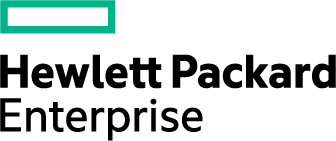Starting point.
Kantonsspital Graubünden had decided early on to go for a Citrix VDI solution for its approximately 1,200 desktop workstations, and the various workstations in areas such as surgery and intensive care called for models that enabled the desktop workstations to be centrally published from the data center onto thin clients. However, the benefits gained from centralized management were offset by limitations typical of VDI—when used intensively, performance dropped significantly, especially in terms of graphics. Video conferences were increasingly challenging in the existing environment and 3D simulations were affected by severe lag on end devices, which is a huge issue considering the ever-increasing use of imaging techniques and simulations in healthcare today. Michele Donnicola, Head of ICT Infrastructure: “Our ‘Lean Hospital’ approach aims to give users a mobile, high-performance, individual workstation. Doctors and caregivers need to be able to write notes and access information at their patients’ bedside, and work as productively from home as they can in the hospital, but the old VDI infrastructure’s sub-par graphics performance was standing in the way of achieving this aim.”
We made absolutely the right choice in selecting HPE Moonshot as the solution for our hosted desktop infrastructure. We couldn’t be more pleased with the support we received from HPE and our partner, Bechtle.
Michele Donnicola, Head of ICT Infrastructure, Kantonsspital Graubünden
Solution.
Working together with HPE Switzerland and the HPE Platinum Partner Bechtle, a new desktop solution was developed and deployed. Michele Donnicola: “Of greatest importance to us were the graphics performance and to standardize 80–90% of our workstations, with data security, recovery and business continuity not far behind.” Based on these wishes, a range of technology concepts was tested before a decision was made for a solution that combined the benefits of a centralized IT with the performance of dedicated hardware: HPE Moonshot. In contrast to VDI solutions that need a hypervisor layer for virtualizing hardware resources, HPE Moonshot gives every user a published desktop with a dedicated GPU and an own SSD in the data center. In this way, even graphic-intensive applications always have enough processing power. An HPE Moonshot infrastructure consists of an HPE Moonshot chassis in which Moonshot cartridges are added via plug and play. Each rack can be loaded with a maximum of 45 cartridges and is preinstalled with various components for management, power provisioning, cooling and networking. The Kantonsspital’s HPE Moonshot desktops are published via Citrix and managed centrally.
Business benefits.
Medical staff and administrators have been working with the new VDI infrastructure for several months. “Looking back over the last few months, we can say we made absolutely the right choice in selecting HPE Moonshot”, says Michele Donnicola. “Despite maximum standardization, the user experience has improved significantly and in particular with graphics apps. Our doctors can now view high-resolution X-rays and smooth running 3D animations and hold video conferences from home or on the road via the hosted desktop environment, which has helped enormously in the current crisis. Thanks to the combined efforts of HPE and Bechtle, we received the HPE Moonshot cartridges very quickly and were able to migrate key users very fast. It goes without saying that this technology will help us better meet the challenges posed by the pandemic.” HPE Moonshot’s well-structured system architecture simplifies system management. By doing away with the virtualization layer and with data now being stored directly on the HPE Moonshot cartridges rather than in an SAN, performance has been given an boost and troubleshooting is much simpler.
Michele Donnicola: “Problems are very easy to track and are limited to the respective cartridge’s 15 users. HPE Moonshot reduces data center complexity and gives our team the security they need, plus the technology allows resources to be assigned to user groups in a very targeted manner.” And then there’s the scalability. When additional desktop workstations are required, all you have to do is add a cartridge to the rack. Despite dedicated hardware power for users, the application software can be managed through a central image as easily as in a VDI infrastructure. By distributing the four HPE Moonshot chassis over two data centers, it can be ensured that hospital staff can still access some 80% of their standard IT performance, even in the event of a total failure of one data center.
Partner.



